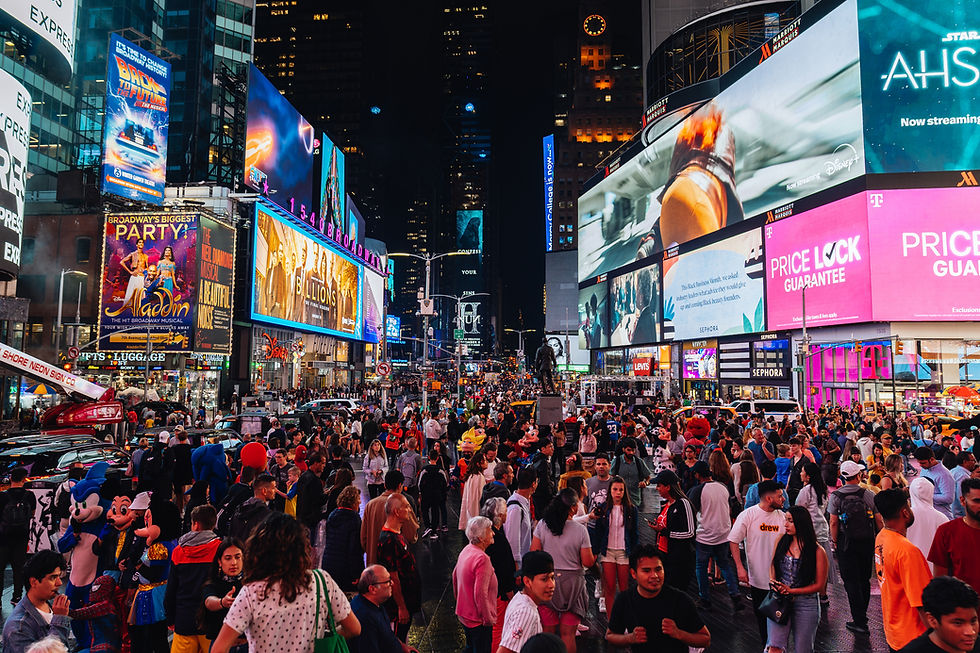A Clearer View at Sea: How Computer Vision is Elevating Security on Modern Cruise Ships
- salomé furhmann
- 18 août
- 3 min de lecture
Dernière mise à jour : 12 sept.
A Clearer View at Sea: How Computer Vision is Elevating Security on Modern Cruise Ships
Cruise ships are no longer just vessels that take passengers from port to port; they are self-contained cities, complete with restaurants, theaters, swimming pools, shops, and accommodation for thousands. Managing safety and security in such a dynamic, multi-level environment is a complex challenge. Every day, crews must balance hospitality with vigilance, ensuring that passengers feel both welcome and protected. From the moment guests arrive at the port until the final wave goodbye, every stage of the journey demands precise coordination and rapid response to potential risks.
Increasingly, cruise lines are turning to computer vision technology to meet these challenges. By transforming existing camera systems into intelligent networks capable of real-time analysis, computer vision provides a new level of situational awareness. It doesn’t just record what is happening — it interprets events as they unfold, alerting crew to emerging issues before they escalate.
A Seamless and Secure Start: Embarkation and Disembarkation
Boarding a cruise is often the first highlight of a passenger’s vacation. Yet behind the scenes, it is a critical security operation. Thousands of guests arrive within a short time frame, each carrying luggage, passing through checkpoints, and finding their way to cabins. Small delays can quickly lead to congestion, which is not only inconvenient but can also pose safety risks.
With computer vision, embarkation becomes a smoother and more controlled process. Cameras positioned at entry points can monitor the flow of passengers in real time, allowing security teams to identify bottlenecks instantly and deploy staff where needed. Intelligent analysis can flag unusual movements or suspicious activities, enabling proactive intervention. Even luggage handling can be monitored, ensuring that bags are directed to the right location and alerting crew if any unattended items are detected. The same principles apply during disembarkation, helping maintain order and security as passengers leave the vessel and enter port facilities.
Life On Board: Safety in Every Corner
Once the ship sets sail, it becomes a bustling floating community. Entertainment venues fill with guests, pool decks become lively gathering spots, and retail spaces welcome constant foot traffic. While these areas contribute to the vibrant on-board experience, they also require careful monitoring to maintain safety and comfort.
Computer vision enables cruise operators to keep a constant, non-intrusive watch over public areas. It can detect when certain locations become overcrowded and prompt crew to manage the flow of people, reducing the risk of accidents. If unsafe behavior occurs — such as running near wet surfaces, attempting to climb railings, or entering restricted zones — alerts can be sent immediately to security teams. In retail areas, intelligent surveillance can discreetly deter theft without creating an oppressive atmosphere. By understanding how spaces are used throughout the day, ship management can even adjust cleaning schedules, seating arrangements, and staffing levels to improve passenger satisfaction.
Emergency Response: Every Second Counts
In an emergency, speed and clarity of action are paramount. Whether the incident involves a fire, a medical emergency, or severe weather, computer vision provides real-time insights that guide decision-making. Cameras equipped with intelligent monitoring can track passenger movements during evacuation drills, helping crew refine procedures to ensure safe and efficient routes to muster stations.
In a real-life evacuation, the system can identify individuals who may need special assistance — such as children, elderly passengers, or those with limited mobility — and relay their location to crew members. By integrating with ship-wide communication systems, computer vision allows security teams to coordinate responses across multiple decks and zones, ensuring that no one is overlooked and that every second is used effectively.
A Strategic Investment for Cruise Operators
For cruise lines, investing in computer vision is not only a matter of safety — it is a commitment to enhancing the passenger experience. The technology scales to fit vessels of any size, from luxury yachts to mega-cruisers, and works seamlessly with existing camera infrastructure. It is also designed with privacy in mind, complying with both international maritime regulations and data protection laws.
The result is a safer, more efficient operation that reassures passengers without intruding on their holiday. In an industry where trust and reputation are invaluable, the ability to demonstrate proactive, technology-driven safety measures can be a decisive competitive advantage.
Charting a Safer Course Forward
Just as radar and GPS revolutionized navigation, computer vision is transforming how cruise ships approach security. It offers a clearer, more intelligent view of life on board, enabling crews to act with speed, accuracy, and confidence.
With Technis, cruise lines can ensure that passengers not only enjoy unforgettable journeys but also feel secure at every stage of their voyage — from their first step on deck to the moment they return to shore. By bringing advanced computer vision to the high seas, the industry is charting a course toward a future where safety and luxury sail hand in hand.






Commentaires